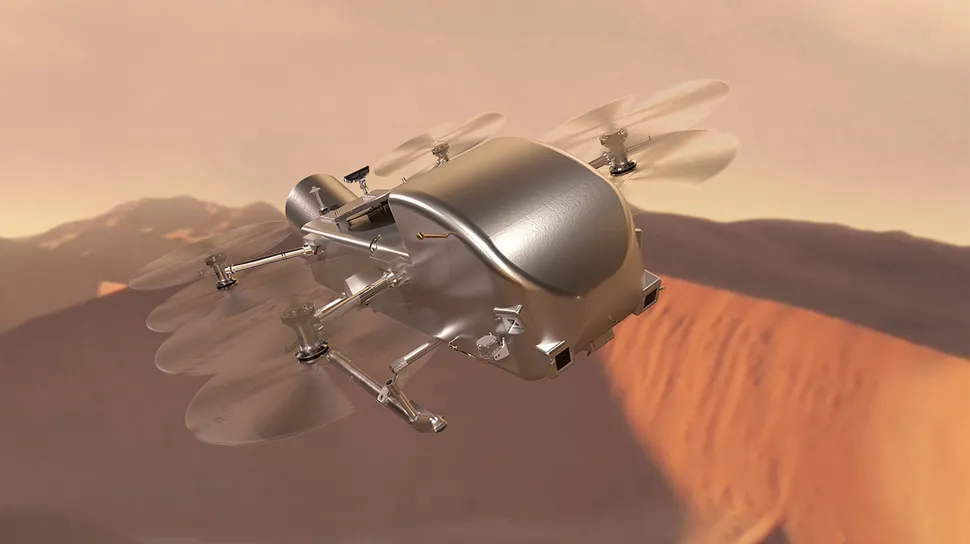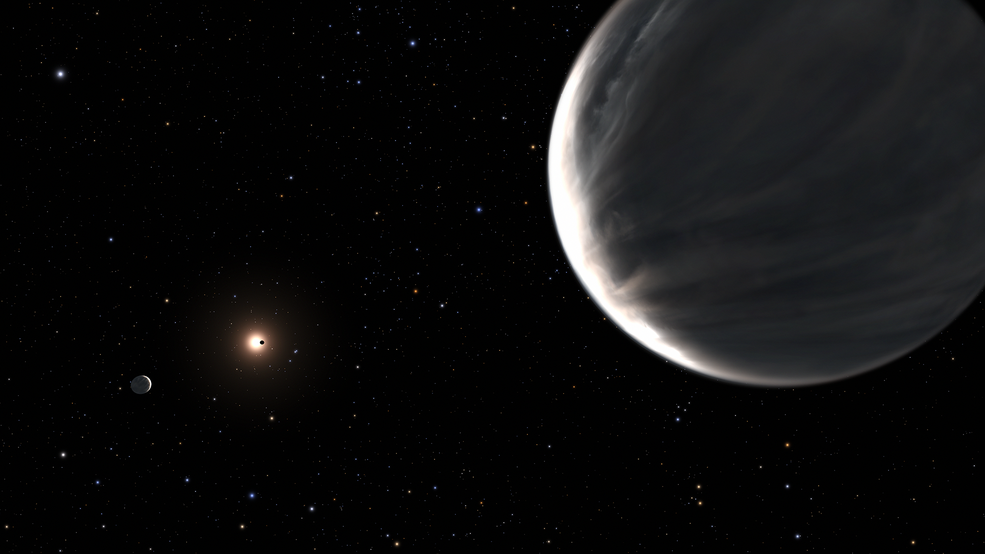SpaceX’s powerful Falcon Heavy rocket will launch yet another high-profile NASA science mission.
The agency announced today (Nov. 25) that it has picked the Falcon Heavy to loft Dragonfly, a $3.35 billion mission that will investigate the life-hosting potential of Saturn’s huge moon Titan. The burly rocket also launched NASA’s Psyche asteroid probe and Europa Clipper spacecraft, in October 2023 and October 2024, respectively.
The Dragonfly contract is a firm, fixed-price deal with a value of nearly $257 million, “which includes launch services and other mission-related costs,” NASA officials wrote in an update this afternoon.
If all goes according to plan, Falcon Heavy will launch the car-sized Dragonfly rotorcraft during a three-week window in July 2028. The spacecraft will then spend six years making its way to Titan, the second-largest moon in the solar system (after Jupiter’s Ganymede).
Titan’s size isn’t its only intriguing characteristic. The frigid satellite hosts seas and lakes of hydrocarbons, making it the only body beyond Earth known to host stable liquids on its surface. In addition, organic compounds, the carbon-containing building blocks of life as we know it, are common on the world.
Some scientists therefore think Titan may be capable of supporting life — perhaps on its alien surface or in its suspected subterranean ocean of liquid water. Dragonfly is designed to investigate this question, and to shed light on a little-studied world more generally.
“With contributions from partners around the globe, Dragonfly’s scientific payload will characterize the habitability of Titan’s environment, investigate the progression of prebiotic chemistry on Titan, where carbon-rich material and liquid water may have mixed for an extended period, and search for chemical indications of whether water-based or hydrocarbon-based life once existed on Saturn’s moon,” NASA officials wrote in today’s update.
The nuclear-powered rotorcraft will operate for about 2.5 Earth years on Titan’s surface, flitting from place to place to get an in-depth look at a variety of landscapes.
Dragonfly has experienced delays and cost increases during its development. When NASA originally selected the mission in 2019, for example, its cost was capped at $1 billion, and launch was targeted for 2027.
Such issues are far from uncommon on ambitious exploration efforts such as Dragonfly. And the mission has made significant progress recently; it remains on track for its current 2028 launch target, NASA announced earlier this year.
Falcon Heavy is the second-most-powerful rocket currently in operation, after NASA’s Space Launch System moon rocket (though SpaceX’s Starship megarocket will claim the title when it comes online). Falcon Heavy has launched 11 times to date, most recently sending Europa Clipper toward Jupiter’s ocean moon Europa on Oct. 14.
Source: https://www.space.com/space-exploration/missions/spacex-falcon-heavy-rocket-will-launch-nasas-epic-dragonfly-mission-to-saturns-huge-moon-titan-in-2028



